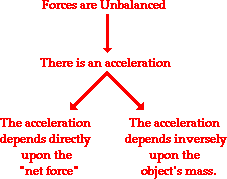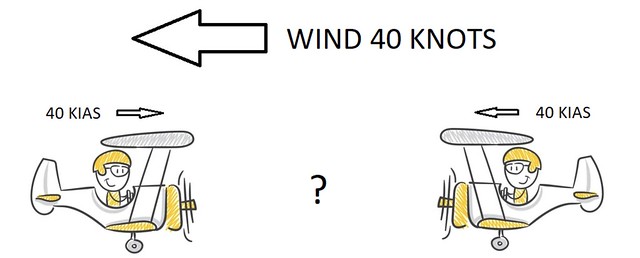not in the context that you are trying to twist the physics to continue to prove your false theory
So you are saying an object in motion striking an identical stationary object will not result in an equal and opposite reaction?
Mr. Newton disagrees:
Newton's first law of motion predicts the behavior of objects for which all existing forces are balanced. The first law - sometimes referred to as the law of
inertia - states that if the forces acting upon an object are balanced, then the acceleration of that object will be 0 m/s/s. Objects at equilibrium (the condition in which all forces balance) will not accelerate. According to Newton, an object will only accelerate if there is a
net or
unbalanced force acting upon it.
The presence of an unbalanced force will accelerate an object - changing its speed, its direction, or both its speed and direction.
Newton's second law of motion pertains to the behavior of objects for which all existing forces are not balanced. The second law states that the acceleration of an object is dependent upon two variables - the net force acting upon the object and the mass of the object.
The acceleration of an object depends directly upon the net force acting upon the object, and inversely upon the mass of the object. As the force acting upon an object is increased, the acceleration of the object is increased. As the mass of an object is increased, the acceleration of the object is decreased.
Newton's Third Law
A force is a push or a pull that acts upon an object as a results of its interaction with another object. Forces result from interactions! Some forces result from
contact interactions (normal, frictional, tensional, and applied forces are examples of contact forces) and other forces are the result of action-at-a-distance interactions (gravitational, electrical, and magnetic forces). According to Newton,
whenever objects A and B interact with each other, they exert forces upon each other. When you sit in your chair, your body exerts a downward force on the chair and the chair exerts an upward force on your body. There are two forces resulting from this interaction - a force on the chair and a force on your body. These two forces are called
action and
reaction forces and are the subject of Newton's third law of motion. Formally stated, Newton's third law is:
For every action, there is an equal and opposite reaction.
The statement means that in every interaction, there is a pair of forces acting on the two interacting objects. The size of the forces on the first object
equals the size of the force on the second object. The direction of the force on the first object is
opposite to the direction of the force on the second object. Forces
always come in pairs - equal and opposite action-reaction force pairs.
["Borrowed" from
The Physics Classroom,
https://www.physicsclassroom.com/]




